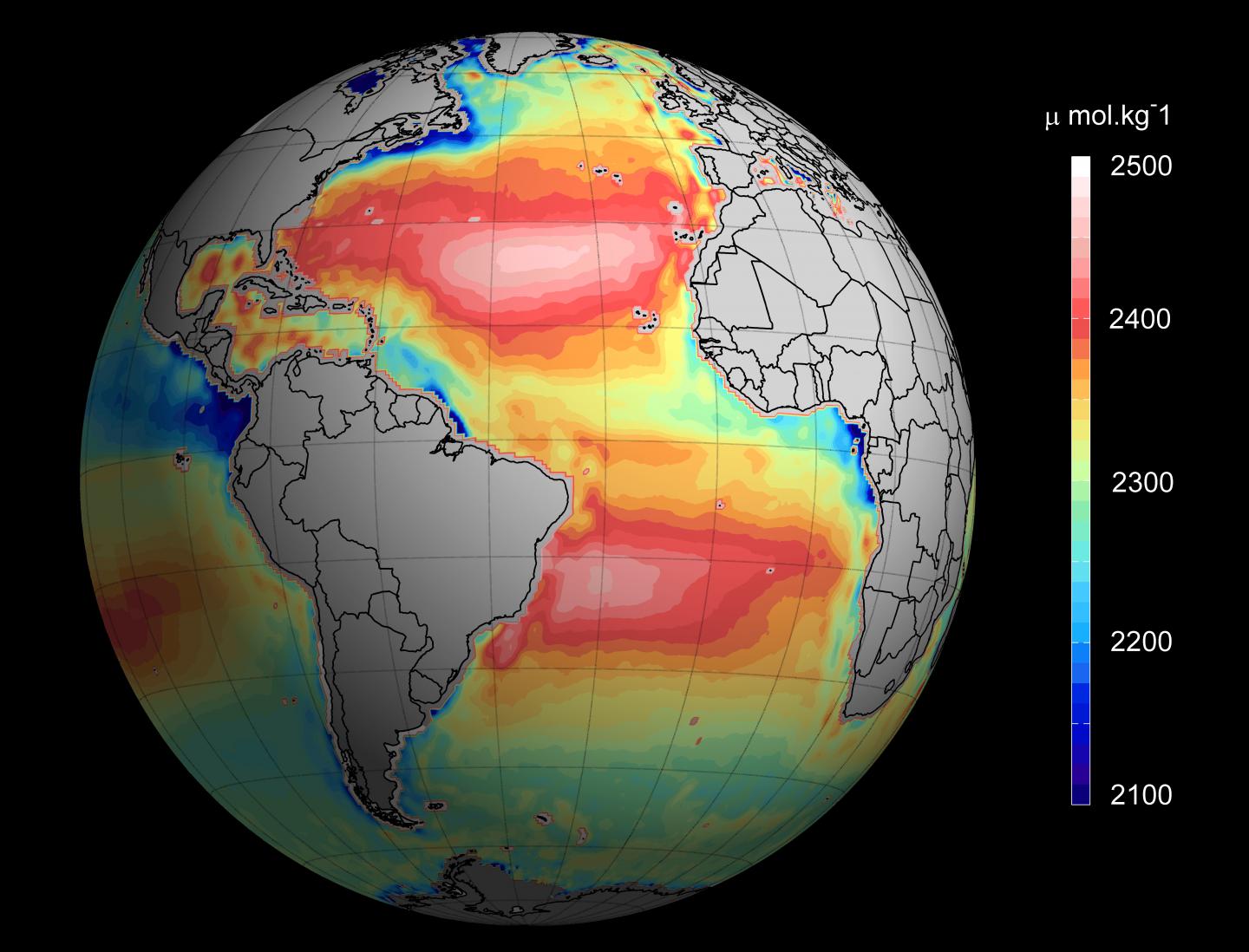The Earth's oceans take up about a quarter of global CO2 emissions, which can turn the seawater more acidic, making it more difficult for some marine life to live.
Rising CO2 emissions, and the increasing acidity of seawater projected over the next century, has the potential to devastate some marine ecosystems, a food resource on which we rely, and so careful monitoring of changes in ocean acidity is crucial.

Total ocean alkalinity as viewed from space. Credit: Ifremer/ESA/CNES
Current methods of measuring temperature and salinity to determine acidity are restricted to in situ instruments and measurements taken from research vessels. This approach limits the sampling to small areas of the ocean, as research vessels are very expensive to run and operate.
The new techniques use satellite mounted thermal cameras to measure ocean temperature while microwave sensors measure the salinity. Together these measurements can be used to assess ocean acidification more quickly and over much larger areas than has been possible before.
A number of existing satellites can be used for the task; these include the European Space Agency's Soil Moisture and Ocean Salinity (SMOS) sensor that was launched in 2009 and NASA's Aquarius satellite that was launched in 2011.
The development of the technology and the importance of monitoring ocean acidification are likely to support the development of further satellite sensors in the coming years.
The work was funded by the European Space Agency.
Citation: Peter E. Land, Jamie D. Shutler, Helen S. Findlay, Fanny Girard-Ardhuin, Roberto Sabia, Nicolas Reul, Jean-Francois Piolle, Bertrand Chapron, Yves Quilfen, Joseph Salisbury, Douglas Vandemark, Richard Bellerby, and Punyasloke Bhadury, ' Salinity from Space Unlocks Satellite-Based Assessment of Ocean Acidification', Environmental Science&Technology DOI: 10.1021/es504849s





Comments